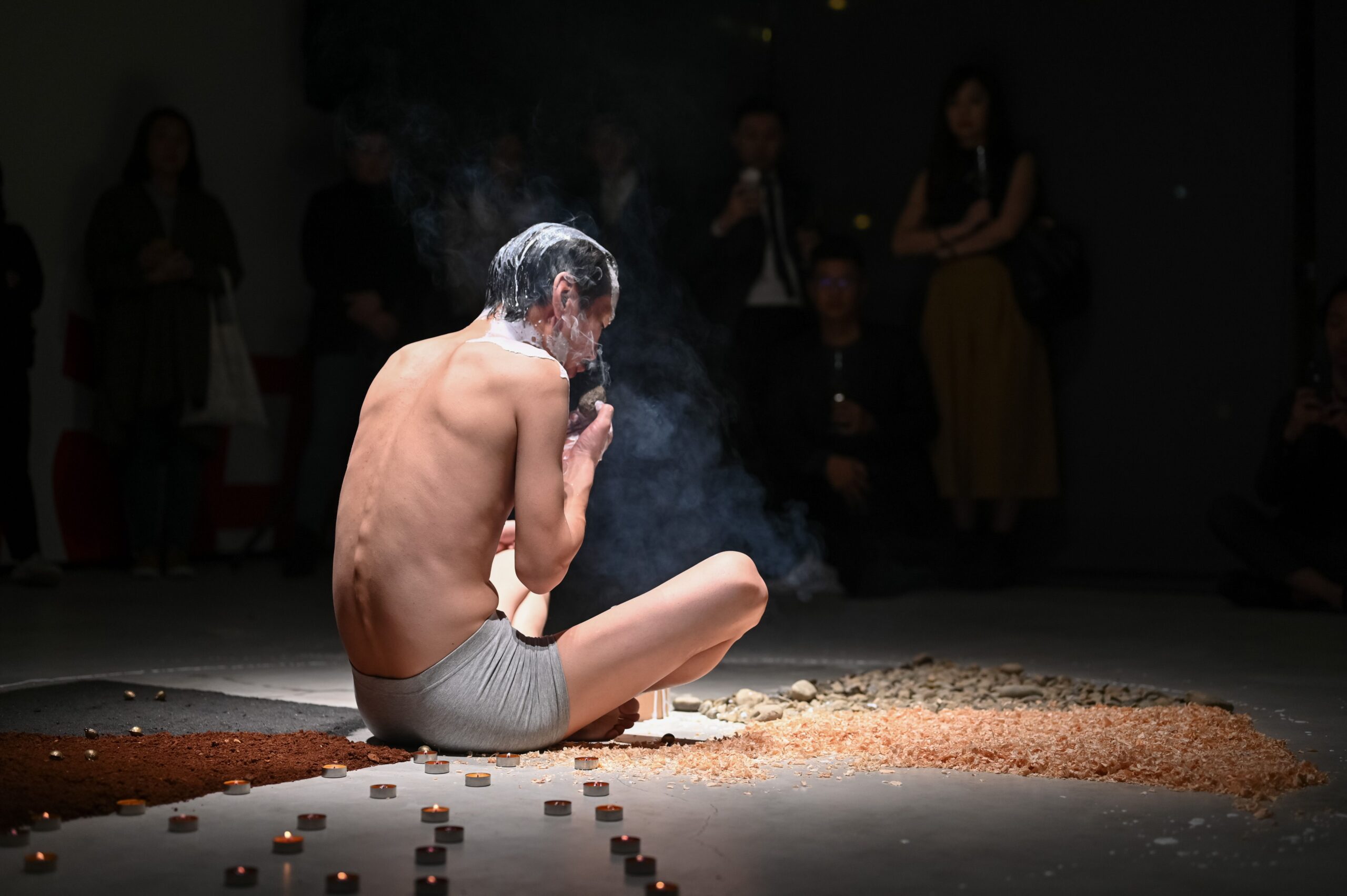
Lullaby for Mother Nature by Ganzug Sedbazar, in collaboration with sound artist and musician Davaajargal Tsaschikher.
Image courtesy of TKG+, Taipei, Taiwan.
COBO SOCIAL: Mongolia’s contemporary art could be what we need right now, artists Davaajargal Tsachikher and Ganzug Sedbazar featured
Performance, land and digital art are some of the diverse aspects of Mongolian contemporary art heavily influenced by shamanic rituals, religious myths and indigenous cultures specific to the country and beyond. Embattled by the current pandemic and ongoing ecological crisis, this could be the kind of art the world needs right now.
In January this year, Mongolian performance artist Ganzug Sedbazar, in collaboration with sound artist and renowned musician Davaajargal Tsaschikher, performed Lullaby for Mother Nature (presciently titled given the trajectory of this year) at TKG+, an acclaimed Taiwanese art gallery with experimental ambitions. This was in conjunction with a book launch by Taiwanese artist Charwei Tsai and a citywide Gallery Night prior to the regional art fair Taipei Dangdai.
Yet throughout history, many foreign myths have become entangled with the legend of Shambhala, some with the intention of garnering military or political support, such as the identification of Russia, Mongolia, or Japan as Shambhala. The notion of this mythical place even found its way into Western occult movements, other systems of belief, and most concerning of all, racist ideologies.
This distortion of prejudice and historicization is something we are all very familiar with. It is how we often view our existence, as individuals and societies, till today. Perhaps especially so today as we are living in the middle of a public health crisis—even the decision to leave the house or meet someone has to be contemplated as a possible risk and rightfully so. But such a lifestyle also has a way of fragmenting our reality and skewing our perceptions, till fear is the only lens we know. Perhaps it is the prerogative of art to compel us to put down our distorted viewfinders, even for just a few precious, scarce moments.
One of the few artists currently producing work that compels us to do exactly this is multimedia artist Timur Si-Qin. He is of German and Mongolian-Chinese heritage and grew up in Beijing and America. Si-Qin is part of a new generation of artists associated with “New Materialism,” which proposes that objects and materials assert their own power over the viewer, independent of subjective cultural interpretations.
As part of “Focus Group II: Paratexts,” a recent online exhibition of video art by Georgetown, Washington D.C. gallery Von Ammon Co., Si-Qin’s “Campaign for a New Protocol” proposes a new religion based on honoring our place in the physical world. The clip is a virtual reality immersion of natural desert landscapes with sweeping views of mountains and valleys as a backdrop to an A.I. voice questioning our contemporary lifestyle. It can also be found as an introductory video on his website newpeace.faith, that includes a white paper titled A New Protocol.
While all this may appear like whimsical digital art with a trendy New Age twist to the outwardly progressive but conservative-at-heart art world insider, Si-Qin’s art is in fact an authentic expression influenced by his own inherited and experienced connections with indigenous cultures and lands. While his father is an ethnic Mongolian, after his mother remarried, he grew up with his San Carlos Apache stepfather and sisters in Arizona. The artist described it as a “unique experience to have, as not many outsiders get to experience both the deep beauty and heartbreaking darkness of the Indigenous American experience. The experience left me with the recognition…of the urgency of the Indigenous message for ecological reciprocity today.”
The current pandemic is just the latest in a series of crises and failings on our existing path as a civilization. The mindset required to embark on a radical and urgent process of evaluation and experimentation cannot be found in contemporary Western societies or Asian societies obsessed with displaying a Western veneer. It can only be found amongst individuals and communities that value ecological and spiritual sustainability as intrinsic to their everyday world and inherent history. Mongolian culture, and the kind of contemporary art it inspires, provides only a glimpse into this diverse, ancient and indigenous world we have long forgotten in our so-called pursuit of creative innovation and material progress.
Article by Reena Devi at Cobo Social